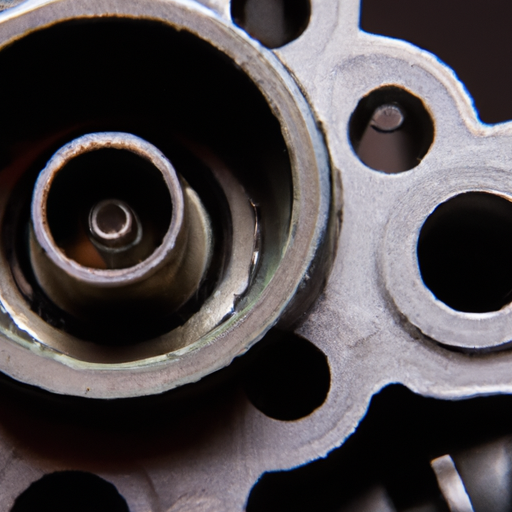
Are you curious about the inner workings of an engine? Well, one vital component that plays a significant role in maintaining engine health is the PCV (Positive Crankcase Ventilation) valve. This small yet powerful valve is responsible for controlling the flow of gases from the crankcase to the intake manifold. By doing so, it helps to regulate the pressure levels inside the engine and prevent harmful emissions from escaping into the atmosphere. Learn more about the importance of the PCV valve and how it contributes to the overall performance and longevity of your engine.
Role of the PCV Valve in an Engine
Understanding the PCV System
The PCV (Positive Crankcase Ventilation) system is an essential component of the engine that helps maintain the optimal functioning and longevity of the entire system. The PCV valve plays a crucial role in this system by regulating the flow of gases between the crankcase and the intake manifold.
Importance of the PCV Valve
The PCV valve is a small but crucial part that helps protect the engine by preventing various issues such as oil sludging, excessive engine wear, harmful emissions, and vacuum build-up. It also plays a significant role in maintaining fuel efficiency, making it a vital component of any engine.
Functioning of the PCV Valve
The PCV valve works by controlling the flow of gases between the crankcase and the intake manifold. It uses a one-way valve to allow the flow of gases from the crankcase to the intake manifold while restricting their reverse flow. This mechanism ensures that any excessive pressure or harmful gases present in the crankcase are safely redirected and burned in the combustion chamber.
Preventing Oil Sludging
One of the critical functions of the PCV valve is to prevent oil sludging within the engine. Over time, the engine produces blow-by gases that contain oil vapors and other contaminants. If these gases are not properly vented, they can lead to a buildup of sludge within the engine, clogging various components and hindering their performance. The PCV valve enables the proper evacuation of these gases, preventing oil sludging and ensuring a clean and well-lubricated engine.
Reducing Engine Wear
Excessive pressure within the crankcase can cause increased engine wear and damage to various components. The PCV valve helps regulate this pressure by allowing the controlled flow of gases. By maintaining optimal pressure levels, the PCV valve reduces the strain on engine parts and minimizes wear and tear, thus extending the engine’s lifespan.
Minimizing Harmful Emissions
Without a functioning PCV valve, harmful gases from the crankcase would be released directly into the atmosphere, leading to increased pollution levels. The PCV valve helps minimize these harmful emissions by redirecting them to the combustion chamber, where they are safely burned along with the fuel-air mixture. This ensures that the engine operates in compliance with environmental regulations and reduces the overall carbon footprint.
Preventing Vacuum Build-up
A faulty PCV valve can lead to the buildup of a vacuum within the engine, causing a range of problems. This vacuum can hinder the optimal functioning of various engine components, leading to decreased performance and even engine stalling. A properly functioning PCV valve helps prevent vacuum build-up by regulating the flow of gases and maintaining the necessary balance within the engine.
Maintaining Fuel Efficiency
The PCV valve plays a crucial role in maintaining fuel efficiency. By ensuring the proper functioning of the air-fuel mixture, it helps optimize combustion efficiency, leading to better fuel economy. Additionally, the PCV valve helps prevent the contamination of the fuel-air mixture with unwanted oil vapors and contaminants, further enhancing fuel efficiency.
Signs of a Faulty PCV Valve
It is important to be aware of the signs that indicate a faulty PCV valve, as failure to address this issue promptly can lead to engine damage. Some common signs of a faulty PCV valve include high oil consumption, engine misfires, rough idling, decreased fuel efficiency, excessive smoke from the exhaust, and a check engine light. If any of these symptoms occur, it is advisable to have the PCV valve inspected and replaced if necessary.
Replacing the PCV Valve
Replacing a faulty PCV valve is a relatively simple task that can be done by most car owners. It is recommended to consult the vehicle’s manual for specific instructions on locating and replacing the PCV valve. Generally, the process involves locating the valve, removing the old one, and installing a new valve in its place. It is important to choose a high-quality replacement valve and ensure it is the correct fit for the specific engine model.
In conclusion, the PCV valve plays a crucial role in maintaining the optimal functioning and longevity of an engine. It helps prevent issues such as oil sludging, excessive engine wear, harmful emissions, and vacuum build-up. By properly regulating the flow of gases, the PCV valve ensures clean and efficient engine operation. Regular inspection and prompt replacement of a faulty PCV valve are essential to keep the engine running smoothly and efficiently. So, next time you wonder about the importance of such a small component, remember that the PCV valve is a vital part of your engine’s health.





